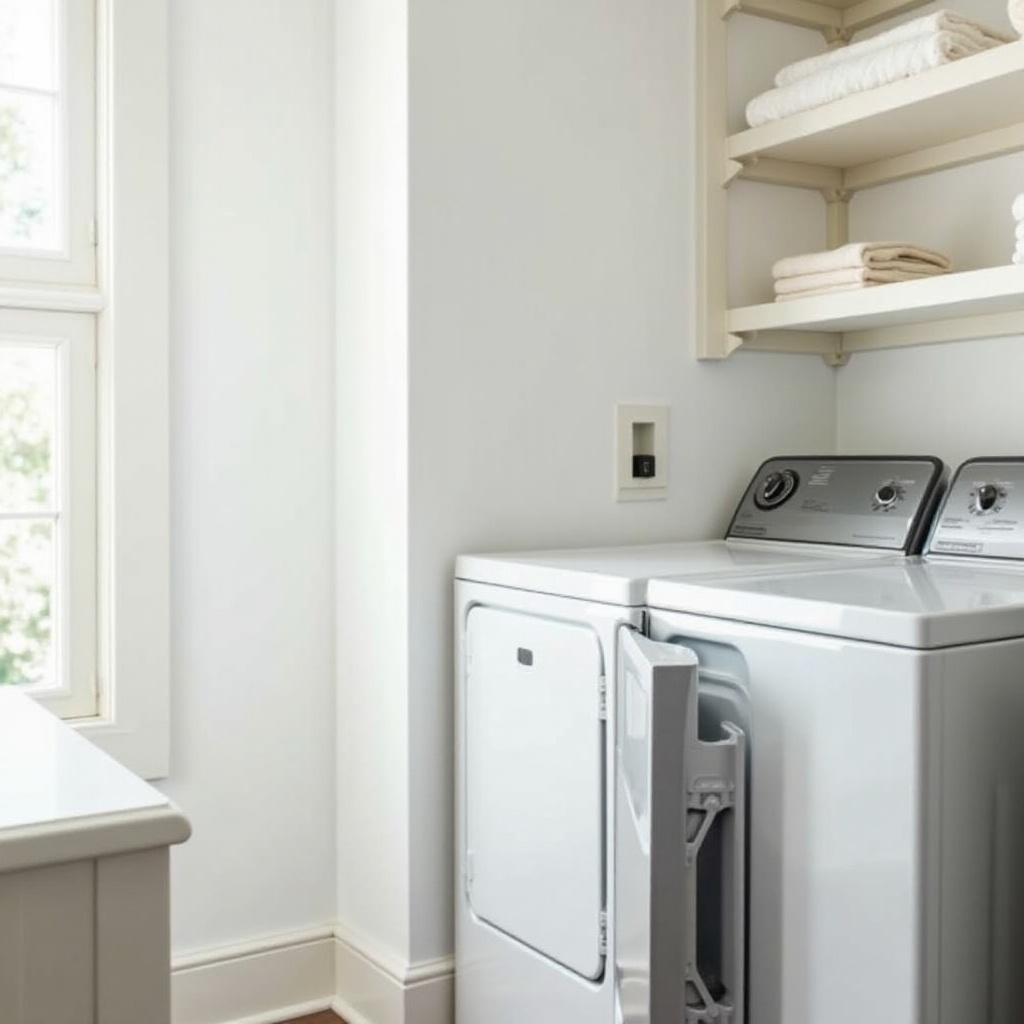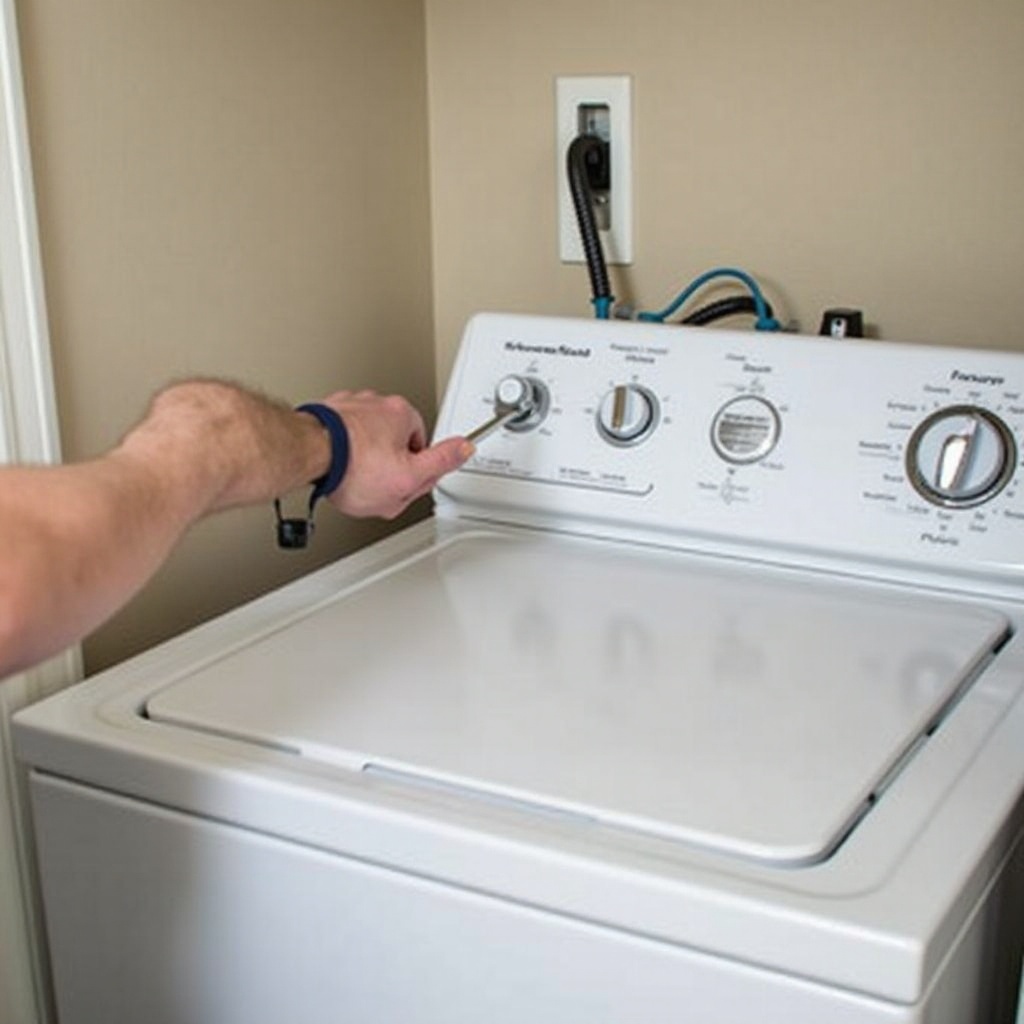Introduction
Understanding the proper dryer outlet height can make a significant difference in your appliance's performance and safety. Ensuring your dryer outlet is at the correct height not only complies with safety codes but also optimizes your dryer's functionality.

The Ideal Dryer Outlet Height
The ideal dryer outlet height is a crucial factor in ensuring both safety and convenience. According to the National Electrical Code (NEC) and most manufacturers, an optimal height for a dryer outlet is typically between 36 and 42 inches from the ground. This placement ensures that the outlet is accessible yet remains safe from possible electrical hazards due to water exposure.
Installing the outlet at this height also aligns with ergonomic principles. Homeowners and technicians can reach the outlet easily without having to bend down excessively or stretch upward uncomfortably. It's important to check your specific dryer's manual, as some models might have particular requirements.

Factors Affecting Dryer Outlet Height
Several factors can influence the ideal height for a dryer outlet. Let's explore these elements:
Dryer Model and Dimensions
The dimensions and design of your dryer significantly impact where the outlet should be placed. Compact dryers might have different outlet height recommendations compared to larger models. Always refer to the manufacturer’s installation guide specific to your dryer model.
Laundry Room Layout
The layout of your laundry room also plays a role. For instance, if your laundry area is part of a narrow closet, the positioning of shelving and other fixtures might necessitate a different outlet height. Ensure that the outlet placement does not obstruct the dryer’s ventilation.
Accessibility and Safety Considerations
Accessibility is vital for maintenance and emergency situations. The outlet should be easily reachable without obstructing other essential components in the laundry room. Additionally, placing the outlet at a proper height helps prevent electrical hazards, especially in areas with potential water exposure.
Installation Tips for Setting the Right Height
Installing your dryer outlet at the optimal height requires careful planning and precise execution. Here’s a step-by-step guide to help you:
Measuring and Marking the Wall
- Determine the Height: Measure 36 - 42 inches from the floor. Mark this point on the wall with a pencil.
- Locate Studs: Use a stud finder to locate wall studs and mark their positions. This will ensure you mount the outlet securely.
Tools Required for Installation
Gather the necessary tools before starting the installation:- Pencil and measuring tape- Stud finder- Screwdriver- Electrical box and outlet- Wire stripper- Drill
Step-by-Step Installation Guide
- Turn Off Power: Ensure the power to the area where you’ll be working is turned off at the breaker box.
- Install Electrical Box: Position the electrical box at the marked height and secure it to the stud.
- Run Wiring: Run the appropriate gauge wire from your circuit breaker to the new outlet location.
- Connect Wires: Strip the wire ends and connect them to the outlet (typically black to brass, white to silver, and green to the ground screw).
- Secure Outlet: Attach the outlet to the electrical box and secure it with screws.
- Restore Power and Test: Turn the power back on and use a circuit tester to ensure the outlet is installed correctly.
Understanding Local Building Codes
Compliance with electrical codes is essential for safety and legality. Here’s what you need to know:
Overview of NEC (National Electrical Code) Guidelines
The NEC sets the national standards for electrical safety in the U.S., which includes guidelines on proper outlet installation heights.
Local vs. National Requirements
While the NEC provides a national baseline, local codes may have additional or more stringent requirements. Always check with your local building department to ensure compliance.
DIY vs. Professional Installation
Deciding between DIY and professional installation depends on your comfort and experience with electrical work.
Pros and Cons of DIY Installation
- Pros: Cost savings, flexible scheduling, personal satisfaction.
- Cons: Risk of errors, potential safety hazards, time-consuming.
When to Hire a Professional Electrician
Hire a professional if you’re unsure about the electrical codes, lack the necessary tools, or prefer the peace of mind that comes with expert installation.
Troubleshooting and Adjustments
Sometimes, you may encounter issues post-installation. Here are some tips:
Common Issues with Dryer Outlet Placement
- Misalignment with the dryer’s plug
- Inadequate ventilation due to poor spacing
- Outlet not functioning correctly
How to Adjust Height for Different Dryer Models
If your dryer model changes, measure the required height and adjust the outlet position accordingly, ensuring it’s within the recommended range of 36 to 42 inches.

Conclusion
Proper installation of your dryer outlet at the ideal height ensures safety, convenience, and optimal dryer performance. By following the guidelines and tips mentioned, you can achieve a perfect setup for your laundry room.
Frequently Asked Questions
What is the standard height for a dryer outlet?
The standard height for a dryer outlet is generally between 36 and 42 inches from the floor.
Can I install a dryer outlet myself?
Yes, you can install a dryer outlet yourself if you have the necessary tools and knowledge about electrical work; otherwise, it’s best to hire a professional.
What tools do I need for installing a dryer outlet?
You’ll need a pencil, measuring tape, stud finder, screwdriver, electrical box, outlet, wire stripper, and drill for installing a dryer outlet.
